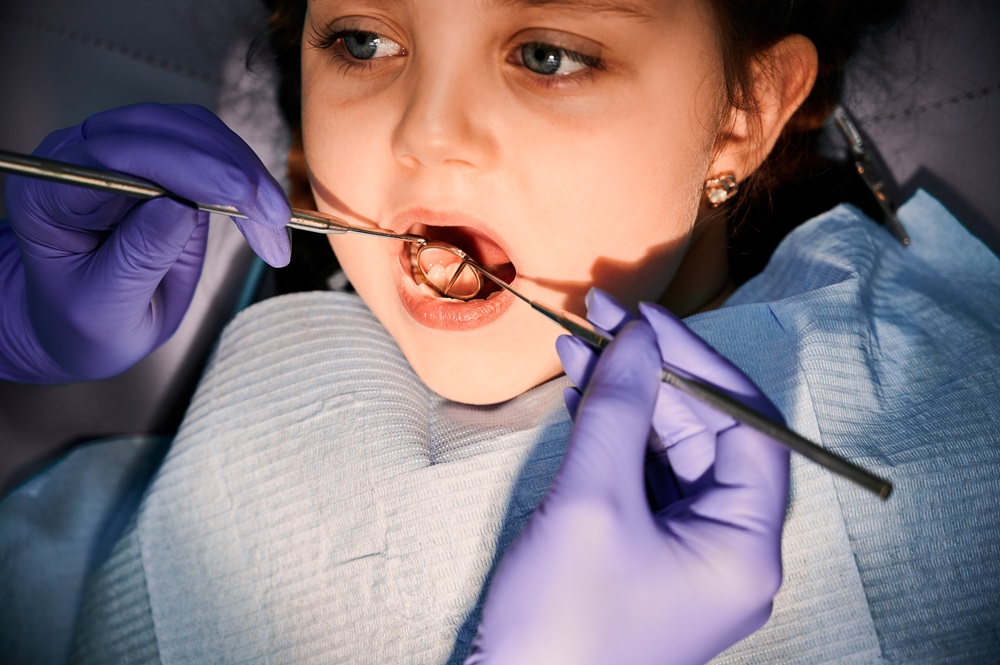Molar Incisor Hypomineralization (MIH) Treatment in Pune
Molar Incisor Hypomineralization (MIH) Treatment in Pune
Molar Incisor Hypomineralization (MIH) is a dental condition that affects the enamel of the molar and incisor teeth, leading to defects in tooth structure. It is characterized by poor mineralization of the enamel, making the affected teeth more susceptible to decay and other issues.
Causes of Molar Incisor Hypomineralization (MIH)
Several factors have been identified as potential contributors:
1. Prenatal and Perinatal Factors:
◦ Maternal Health: Conditions such as maternal illness, high fever during pregnancy, or nutritional deficiencies may impact enamel development.
◦ Prematurity: Premature birth can affect the development of enamel on the molars and incisors.

2. Systemic Conditions:
◦ Childhood Illnesses: Severe illnesses such as high fever or infections during early childhood may interfere with enamel formation.
◦ Nutritional Deficiencies: Deficiencies in key nutrients like calcium, vitamin D, or fluoride during enamel development.
3. Environmental Factors:
◦ Exposure to Environmental Toxins: Exposure to certain environmental toxins or pollutants may contribute to enamel hypomineralization.
4. Genetic Factors:
◦ Family History: A family history of dental conditions may suggest a genetic predisposition to MIH.
Symptoms and Signs of Molar Incisor Hypomineralization (MIH)
The symptoms and signs of MIH can vary in severity but commonly include:
1. Visual Signs:
◦ White Spots or Opacities: Early signs include white or creamy opacities on the enamel, particularly on the molars and incisors.
◦ Brown or Yellow Staining: As the condition progresses, the affected areas may turn brown or yellow.
2. Structural Defects:
◦ Enamel Defects: The enamel may be softer and more porous than normal, leading to structural defects.
◦ Chipping and Wear: The affected teeth may be prone to chipping, wear, or breakage.
3. Sensitivity and Pain:
◦ Increased Sensitivity: The affected teeth may be sensitive to hot, cold, or sweet stimuli due to compromised enamel.
◦ Discomfort: Pain or discomfort may occur, especially if the condition leads to cavities or other complications.
4. Aesthetic Concerns:
◦ Appearance: The discoloration and visible defects can impact the appearance of the affected teeth, which may be a concern for both children and parents.
Diagnosis of Molar Incisor Hypomineralization (MIH)
1. Clinical Examination:
◦ Visual Inspection: The dentist performs a visual inspection to identify signs of MIH, including discoloration and enamel defects.
◦ History Taking: The dentist may inquire about the child’s medical history, including prenatal and perinatal factors, illnesses, and nutritional status.
2. Radiographic Assessment:
◦ X-Rays: Dental X-rays may be used to assess the extent of enamel defects and to check for associated dental issues like cavities.
Treatment Options for Molar Incisor Hypomineralization (MIH)
Treatment for MIH aims to manage the symptoms, prevent further damage, and address any functional or aesthetic concerns. The specific treatment plan depends on the severity of the condition and may include:
1. Preventive Care:
◦ Fluoride Application: Topical fluoride treatments can help strengthen the enamel and reduce sensitivity.
◦ Dietary Modifications: Reducing the intake of sugary or acidic foods can help prevent further damage and decay.
2. Restorative Treatments:
◦ Dental Sealants: Application of dental sealants can protect the molars from decay by covering the affected areas with a protective layer.
◦ Fillings: Composite or resin fillings may be used to restore the affected teeth if cavities have developed.
3. Cosmetic Treatments:
◦ Bonding: Dental bonding materials can be applied to improve the appearance of discolored or damaged teeth.
◦ Crowns: In severe cases where the structural integrity of the tooth is compromised, crowns may be recommended to restore and protect the tooth.
4. Management of Sensitivity:
◦ Desensitizing Agents: Application of desensitizing agents or toothpaste can help alleviate tooth sensitivity.
◦ Regular Monitoring: Ongoing dental check-ups to monitor the condition and manage any changes or complications.
5. Surgical Interventions:
◦ Extraction: In cases where the affected tooth is severely compromised and cannot be restored, extraction may be considered, followed by appropriate prosthetic replacement.
Prevention and Maintenance
1. Oral Hygiene:
◦ Regular Brushing and Flossing: Maintaining good oral hygiene practices can help prevent complications related to MIH.
◦ Regular Dental Visits: Routine check-ups allow for early detection and management of any issues related to MIH.
2. Protective Measures:
◦ Mouthguards: Use of mouthguards during sports or activities that carry a risk of dental trauma can protect affected teeth.
3. Nutritional Support:
◦ Balanced Diet: Ensuring a diet rich in essential nutrients, including calcium and vitamin D, supports overall dental health.
Summary
Molar Incisor Hypomineralization (MIH) is a condition that affects the enamel of the molars and incisors, leading to visible defects and potential sensitivity. Early diagnosis and appropriate treatment are essential to manage the condition and prevent further complications. Treatment options include preventive care, restorative and cosmetic treatments, and management of sensitivity. Maintaining good oral hygiene and regular dental visits are crucial for managing MIH and supporting overall dental health.




